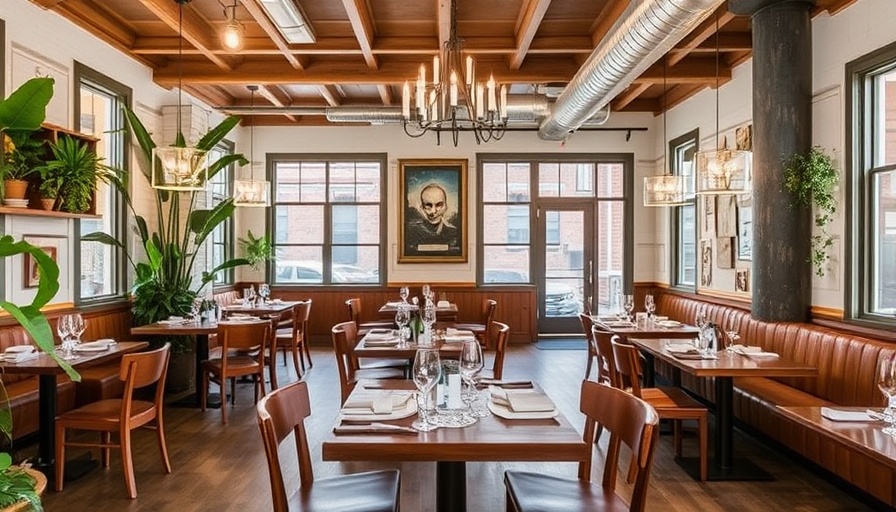
Creating a Rustic Retreat in Urban Spaces
In the hustle and bustle of Brooklyn, the new restaurant Field Guide offers a refreshing escape with its farm-to-table ethos and design influenced by the serene landscapes of Upstate New York. Led by chef Tim Meyers, this establishment aims to provide an elevated dining experience, reminiscent of the simplicity and beauty found in nature. The design studio Mammoth took on the challenge of transforming a former Chinese restaurant into a welcoming retreat that reflects the bucolic essence of its origins.
Bridging Urban Life with Nature
Mammoth founder, Maryana Grinshpun, describes the challenge of creating a space that balances Brooklyn's contemporary vibe with a rustic aesthetic. This juxtaposition was central to the design process. To honor guest experiences, Meyers specifically requested features traditionally associated with more intimate, upscale dining—like tablecloths and soft, candle-like lighting. “We found this contradiction both challenging and inspiring,” said Grinshpun, highlighting the studio's commitment to thoughtful design.
Artistic Influences Shaping the Atmosphere
The ambiance of Field Guide is heavily inspired by 19th-century restaurants and the art of painters such as Andrew Wyeth, known for their muted color palettes and masterful light depiction. To emulate a candlelit environment, designers opted for delicate pendant lights that sway gently, offering a modern take on a classic dining atmosphere. This choice not only enhances the visual appeal but also aligns with the restaurant’s effort to maintain a cozy, inviting experience for diners amidst a bustling city.
Subtle Design Choices Making Big Statements
The bar area, an essential socializing space in any restaurant, features a stunning limestone base topped with a translucent acrylic that reflects light beautifully. This choice was inspired by Japanese architect Hiroshi Sugimoto, emphasizing that every aspect of Field Guide is rooted in careful consideration and artistic intent. Furthermore, the contrast of the textured bar top with sleek hemp barstools creates a unique interplay of materials, woven together with a narrative that honors local history and nature.
Inviting the Outside In
The imagery and elements placed throughout the restaurant aim to invoke a sense of familiarity and warmth. A large backdrop by photographer Oliver Jevremov displays local objects intertwined with fruit, reminiscent of traditional Dutch still-life paintings. This not only adds a layered artistic touch but also celebrates the significance of local ingredients that are integral to the restaurant's menu, thus linking the dining experience to its locality.
Making Informed Choices for Your Workspace
As digital nomads seeking comfort and productivity, visitors to Field Guide can draw inspiration from its design philosophy, especially if you're considering creating or optimizing a workspace at home. The seamless blend of nature and urban aesthetics in Field Guide provides an excellent case study. A workspace characterized by natural light, comfortable seating, and minimalistic decor similar to what Mammoth has achieved can significantly enhance productivity and mental well-being.
The Impact of Thoughtful Design
In a world bustling with standardized restaurant designs, Field Guide stands out by returning to foundational aesthetics—a blank slate approach that encourages creativity and individuality. The design principles applied in this restaurant may also be useful in optimizing personal work environments, where thoughtful space planning can lead to increased comfort and efficiency. Reflecting on aspects from Field Guide, consider how simple elements like lighting, materials, and design layout can dramatically benefit your workspace.
Field Guide offers more than just a culinary experience; it’s an invitation to reflect on the environment, the origins of your meals, and the spaces you inhabit—whether dining out or working from home. As you create your workspace, think about the comfort and inspiration that a well-designed environment brings.
Are you ready to transform your workspace into a haven of productivity and creativity? Take the principles from Field Guide to heart and start designing a space that inspires you!
 Add Row
Add Row  Add
Add 




Write A Comment